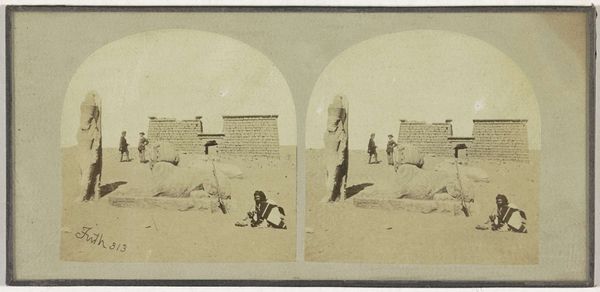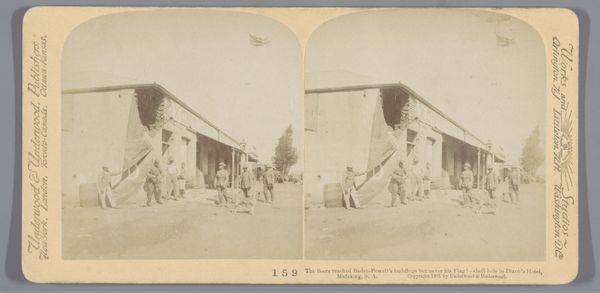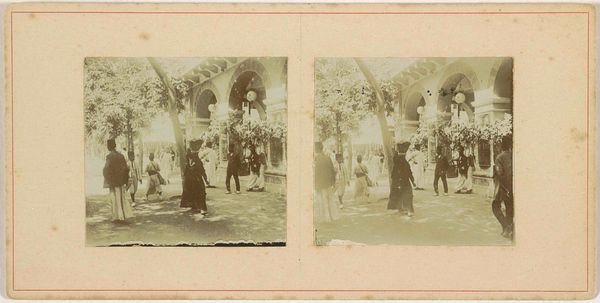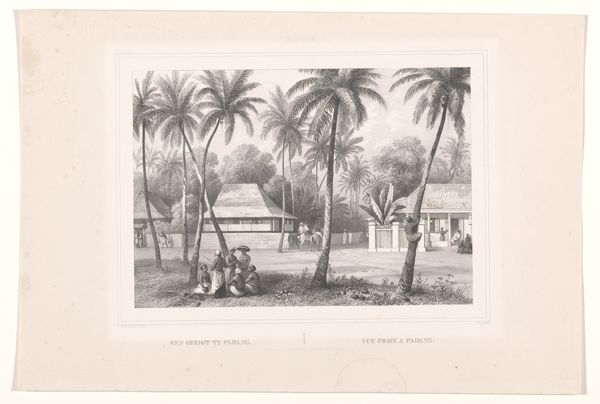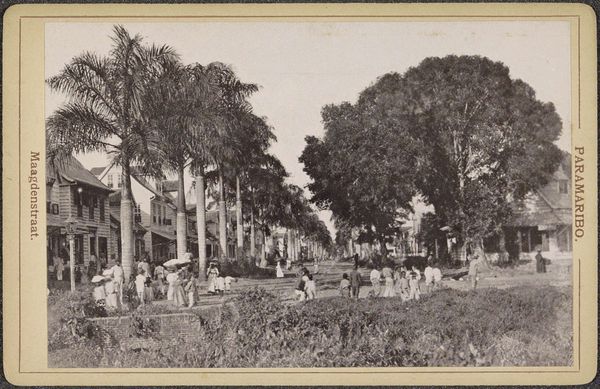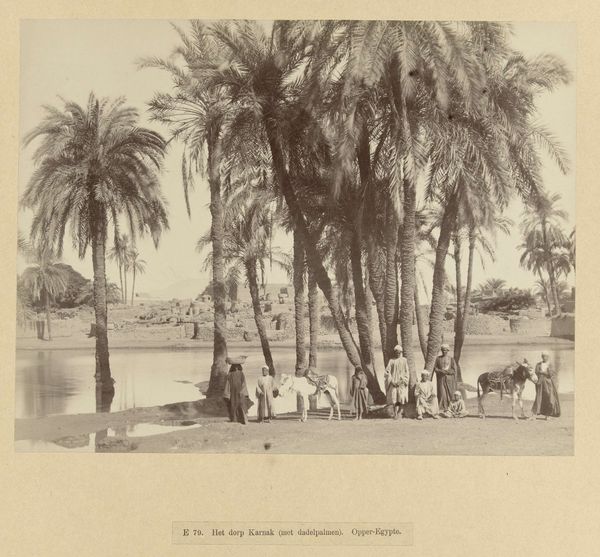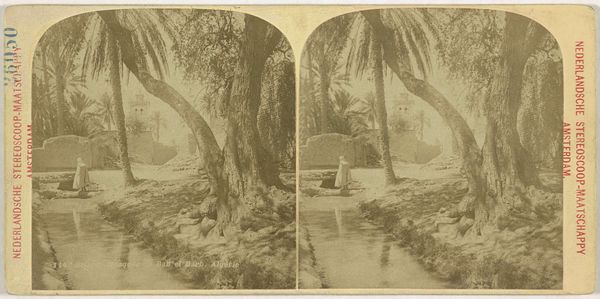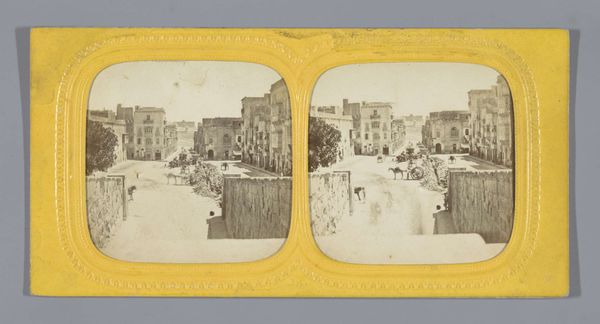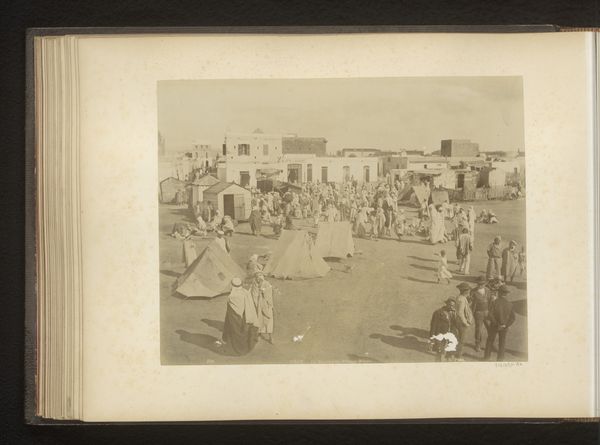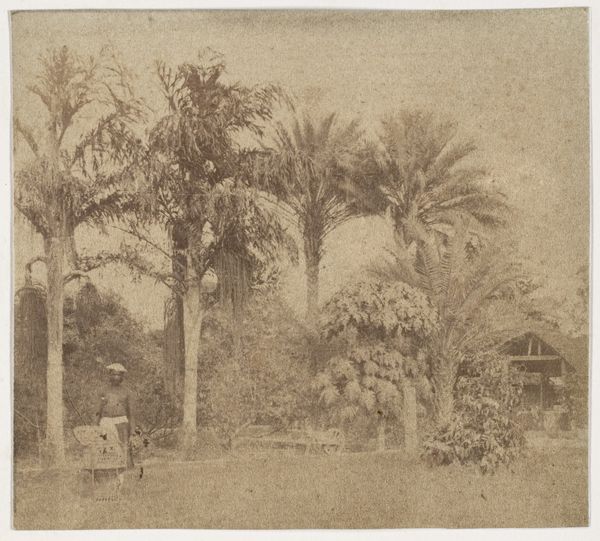
photography, gelatin-silver-print
#
landscape
#
photography
#
coloured pencil
#
orientalism
#
gelatin-silver-print
#
street
#
watercolor
Dimensions: height 87 mm, width 179 mm
Copyright: Rijks Museum: Open Domain
Curator: This is an intriguing gelatin-silver print dating from around 1868 to 1890, titled "Straatbeeld in de Rue Malakoff, Biskra." Editor: It's bleached and sepia-toned, almost ghostly. You get a real sense of the heat, the stillness. Are those people or spirits fading into the walls? Curator: Perhaps a little of both. Consider the social context—photography like this, particularly of "exotic" locales, served a specific colonial purpose. This view of Biskra in Algeria fits into the Orientalist mode, framing it as a timeless, almost dreamlike space. The very act of capturing this street reinforces a particular gaze. Editor: Interesting. I’m immediately drawn to the buildings, though. The stark, simple forms, the heavy shadows. What materials were used to construct those structures? How did those labor practices define that particular landscape? It emphasizes to me how construction determines who uses these buildings. Curator: And who is included in the frame, and how. Note that the figures are blurred, generalized, their individual identities secondary to the overall scene. Think about the power dynamics at play—the photographer, likely a European man, controlling the narrative, while the people of Biskra become passive subjects. We need to deconstruct this romantic vision, see past the aesthetic allure to understand the implicit politics. Editor: I can see that, definitely. To move away from the subjects of the picture: the way the silver gelatin was manufactured also played into all of that colonial infrastructure as well, as gelatin became the cheap and durable binding medium in commercial photographic film during that time. A good way of framing the work. Curator: Absolutely. And the photograph's purpose? To reinforce European notions of the "other," justifying colonial expansion under the guise of artistic documentation. Seeing art in this light is part of resisting colonialist ideology, which is, sadly, still relevant today. Editor: Thinking about how it connects to labor, and materiality, also helps resist a pure artistic intention, which as you state, is so intertwined with ideology in works such as these. Thanks for bringing this insight to the work.
Comments
No comments
Be the first to comment and join the conversation on the ultimate creative platform.

